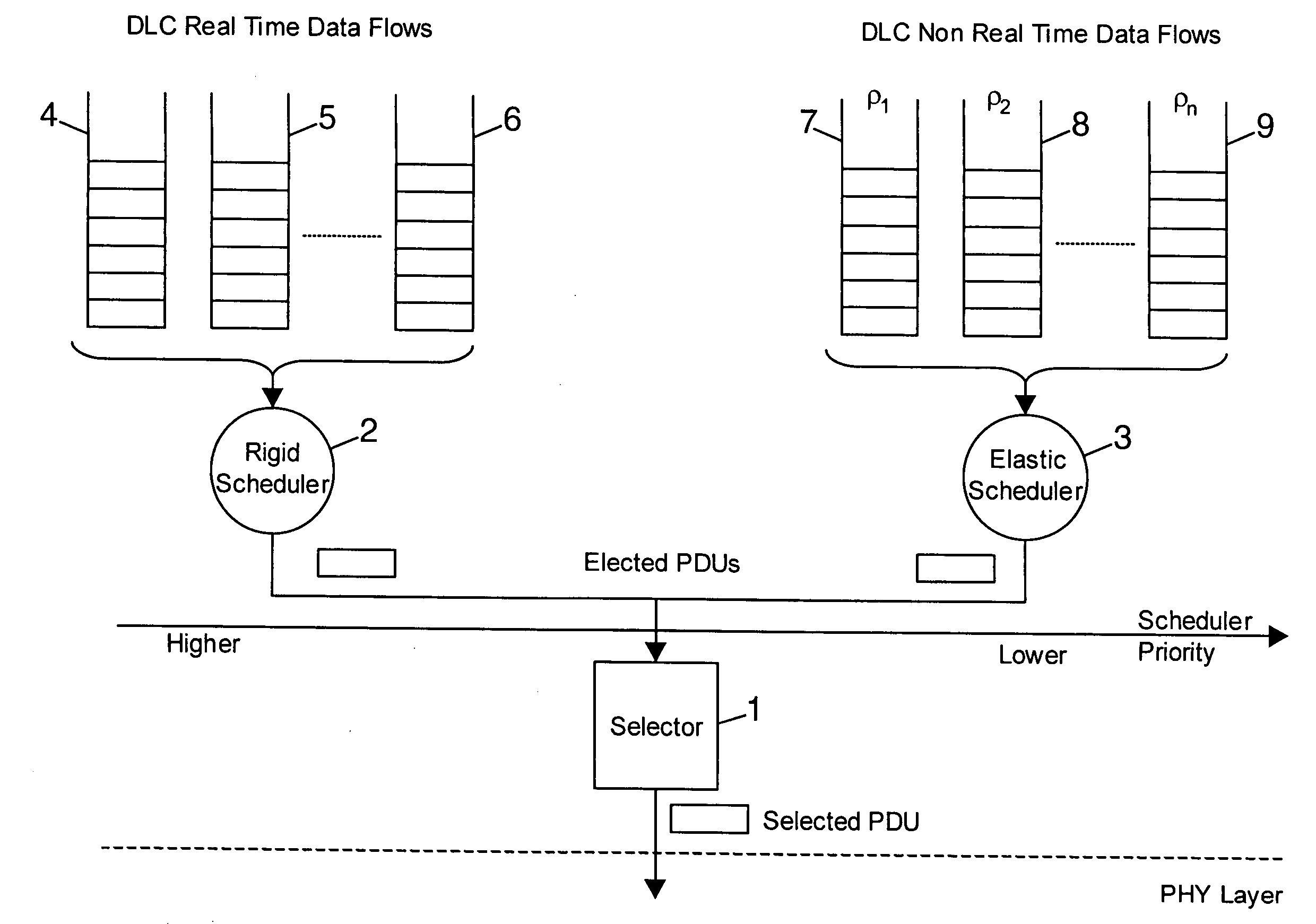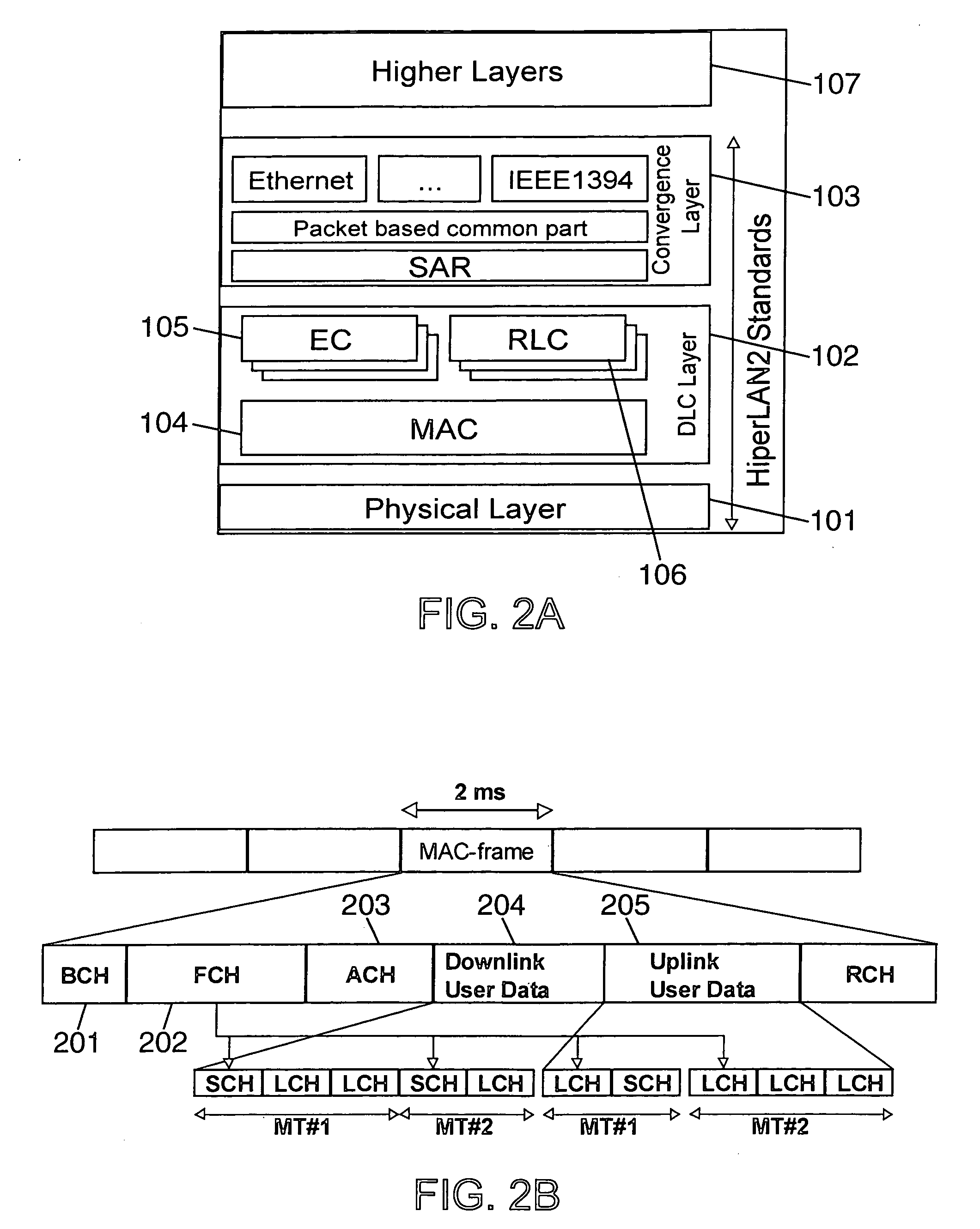Method and device of dynamic resource allocation in a wireless network
a wireless network and resource allocation technology, applied in the field of communication networks, can solve the problems of inability to reliably provide network as a wireless network transmission resource, transmission errors can occur on one or several data flows, etc., and achieve the effect of reducing the bandwidth allocated
- Summary
- Abstract
- Description
- Claims
- Application Information
AI Technical Summary
Benefits of technology
Problems solved by technology
Method used
Image
Examples
Embodiment Construction
[0039] The present invention proposes a dynamic transmission resource allocation based on a plurality of scheduling schemes carrying out their respective rules independently each other.
[0040] One exemplary embodiment of the present invention takes place in a wireless network comprising Mobile Terminals or MTs including a communication protocols stack based on the HiperLAN / 2 or HLAN / 2 or H / 2 standard defined by the European Telecommunication Standard Institute or ETSI. The transmission resource in the wireless network is shared among all MTs of this network, by the RRM unit. This RRM unit is in charge of centralising the allocation of the transmission resource in the network. Preferably, the transmission resource allocation is based on a TDMA scheme. Of course the scope of the invention encompasses applications to any stack of communication protocol layers, as well as applications to other types of networks and to a transmission resource allocation which is not based on TDMA scheme....
PUM
 Login to View More
Login to View More Abstract
Description
Claims
Application Information
 Login to View More
Login to View More - R&D
- Intellectual Property
- Life Sciences
- Materials
- Tech Scout
- Unparalleled Data Quality
- Higher Quality Content
- 60% Fewer Hallucinations
Browse by: Latest US Patents, China's latest patents, Technical Efficacy Thesaurus, Application Domain, Technology Topic, Popular Technical Reports.
© 2025 PatSnap. All rights reserved.Legal|Privacy policy|Modern Slavery Act Transparency Statement|Sitemap|About US| Contact US: help@patsnap.com



